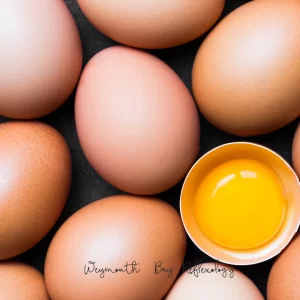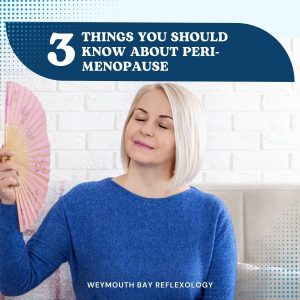Endometriosis Action Month: Understanding the Condition & How Reflexology Can Help
March is Endometriosis Action Month, a time to raise awareness about a condition that affects as many as 1 in 10 people with a uterus in the UK. Despite how common it is, endometriosis is often misunderstood, misdiagnosed, and under-treated, with many people in the UK waiting up to nine years to get a confirmed diagnosis.
If you or someone you love is struggling with unexplained pelvic pain, painful periods, or fertility challenges, understanding what endometriosis is and how to seek help is the first step.
What is Endometriosis?
Endometriosis is an inflammatory condition where tissue similar to the lining of the uterus (endometrial tissue) grows outside the uterus, on the bladder, bowel, ovaries, fallopian tubes, and even other organs. This can lead to:
- Chronic pelvic pain
- Heavy or painful periods
- Pain during or after sex
- Painful urination or bowel movements
- Difficulty conceiving
Endometriosis is not caused by hormones, although hormones influence the symptoms of the condition. There is currently no cure, and the only way to confirm a diagnosis is via a laparoscopy – a surgical procedure that allows doctors to see and assess the endometrial growths inside the pelvis.
Unfortunately, the long wait for diagnosis and treatment can leave many people frustrated, unheard, and in pain. That’s why raising awareness and advocating for better care is so important.
What Can You Do If You Suspect Endometriosis?
If you are experiencing symptoms of endometriosis, the best thing you can do is start recording them.
- Keep a symptom diary: Record when pain occurs, how severe it is, and whether it is linked to your cycle, digestion, or other triggers.
- Speak to a healthcare provider: While period pain is common, debilitating pain is not normal.
- Seek support: Organisations like Endometriosis UK offer resources, advocacy, and community support for those navigating this condition.
How Reflexology Can Support People with Endometriosis
While medical treatments such as pain management, hormone therapies, and surgery are the standard approaches for endometriosis, many people also turn to complementary therapies like reflexology to help manage symptoms.
As a reproductive reflexologist, I take a whole-person approach to endometriosis care. Reflexology does not cure endometriosis, but it can help:
Ease pain: By working specific reflex points linked to the pelvis, digestive system, and nervous system, reflexology can help to reduce reduce muscle tension.
Improve sleep quality: Poor sleep can worsen symptoms. Reflexology promotes deep relaxation, helping to support better rest.
Reduce stress: Living with a chronic condition can take an emotional toll. Reflexology helps calm the nervous system, reducing anxiety and stress levels.
Support circulation: Reflexology encourages improved circulation, which is key to a well functioning reproductive system.
Every person with endometriosis has a unique experience, which is why each session is tailored to your individual symptoms and needs. If you’re looking for a gentle, holistic way to support your body alongside medical care (or whilst you are waiting for it), reflexology may be a valuable part of your wellness routine.
If you’d like to discuss how reflexology could support you, let’s talk, you can book a call with me here.
Endometriosis Awareness Month 2025
Endometriosis is real, painful, and often overlooked. The more we talk about it, the better we can advocate for faster diagnosis, better treatment, and more understanding.
If you or someone you know is struggling with symptoms, know that you are not alone. Whether through medical care, holistic support like reflexology, or community resources, help is available.
For more information and support on this condition visit Endometriosis UK, and if this post resonates with you, or you know someone it may help, please share it. Let’s keep raising awareness and supporting each other.














